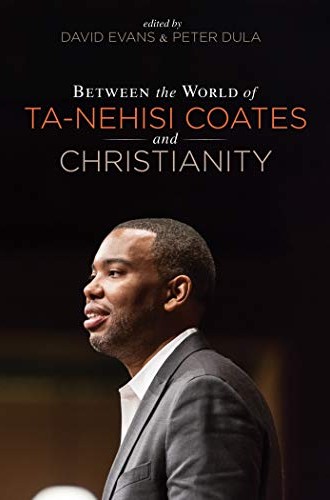Hope, oppression, and Ta-Nehisi Coates
Can Christian hope survive the onslaught against black life?
In her endorsement of Ta-Nehisi Coates’s Between the World and Me, Toni Morrison invoked one of America’s most astute cultural observers: “I’ve been wondering who might fill the intellectual void that plagued me after James Baldwin died. Clearly it is Ta-Nehisi Coates.”
Between the World of Ta-Nehisi Coates and Christianity collects powerful and often quite personal essays on Between the World and Me. Most of the contributions circle around two questions: What does one do with Coates’s dismissal of Christianity? And how should one take the book’s seeming hopelessness? Almost all of the authors agree that the two questions are related, and they work hard to think through one of the central moral issues that arises for Christians today: Can Christian hope survive the onslaught against black life?
Between the World and Me’s central theme arises from the bodies of black men killed by police officers—two in particular. The first is Michael Brown. Coates shares an excruciating story about his son’s reaction to Brown’s death at the hands of police. Instead of sugarcoating things, Coates gives his son the talk that many black fathers give their sons about life and death in America.
The second is Prince Jones Jr., who was Coates’s classmate at Howard University. Prince was also killed by a cop, his exemplary character and accomplishments unable to save him from a fate that befalls so many African American men. At Prince’s funeral, Coates puzzles over the way Mabel Jones, Prince’s mother, clings to Christian hope even in the face of obvious reasons for despair.
How might a Christian respond to Coates’s stance toward Christianity without (as Jennifer Harvey puts it) trying to persuade Coates “to embrace religion or god,” or “hold him responsible for making visible a more complicated understanding of religious thought and practice”? This question takes on added weight if, as Harvey observes, “the religion Coates rejects is a particular type . . . one that emerges from traditions best described as escapist,” where “god is conceived as solution to unending crisis, a ‘go to’ as an explanation of the incomprehensible.”
Vincent Lloyd turns the issue on its head. His essay, like others in the volume, distinguishes Christian hope from the otherworldly optimism Coates dismisses. Lloyd believes that Coates’s inability to make this distinction causes him to miss what might otherwise prove salutary. Christianity’s enchanted view of creaturely life, Lloyd argues, enables it to fully take in the violence done to Brown and Jones Jr.
Getting to the enchantment, however, requires relativizing creaturely life—specifically, by calling it creation. Creation, like hope, requires God. Without God, creatures must bear the weight of the idolatrous enchantments we put on them.
Lloyd worries that Coates imposes the weight of the world upon black fathers now tasked with saving their sons. If the question of hope turns out to be the question of whether black fathers can carry all that weight, hope hardly stands a chance. No father—no matter how powerful, learned, or admirable—can long stand between his young son and an aggressively violent world. To think otherwise is to prop up a flimsy paternalism.
Lloyd wants Christians to situate hope elsewhere, in a different father-son relationship:
Why only imagine the body of Christ crucified two millennia ago as the model for sonship and not the body of Christ continually, globally circulating in the Eucharist, or the body of Christ institutionalized in the church? Why figure familial relations as only modeling those of Father or Son and not Spirit, as has so often and so creatively been done in Black religious communities?
When located within God’s triune life, creaturely life finds real possibilities for enchantment and hope.
The world’s beauty, if we are to see it (and its violations) well, requires more than the world. “Aesthetics opens to that which is beyond the world, to beauty aligned with truth and goodness, all irreducible to worldly terms, all markers of participation in the divine,” Lloyd evocatively writes.
Lloyd’s essay is just one example of many in the book that help us see goodness, truth, beauty, and even hope in a world rightly haunted by Between the World and Me. Coates is right that optimism will do us little good in the world he depicts. But Christianity is not interested in optimism.
These authors remind us that Christian hope depicts the world differently. Unjust, yes. Murderous, unfortunately. Racist, totally. But hopeless? And hopeless for those reasons? To the contrary. As Tobin Miller Shearer puts it in his essay, “hope and oppression are intrinsically linked; the former only exists in the presence of the latter.”
It is unfortunate that Coates’s accounts of oppression and hope are not thick enough to see that they belong together. If he is able to make his way clear to both, we might indeed find our James Baldwin.







